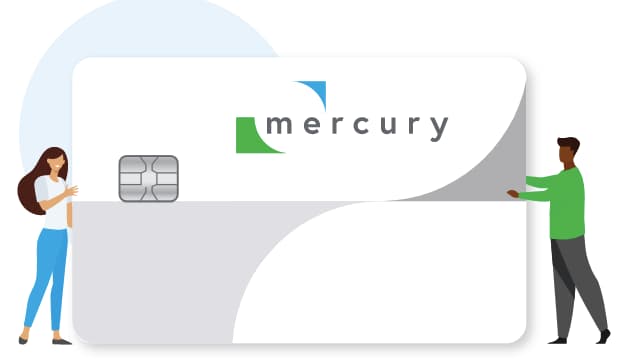The financial sector is undergoing a transformative phase with the emergence of new technologies and financial models. Central to this transformation are two concepts: Decentralized Finance (DeFi) and Traditional Finance (TradFi).
DeFi vs TradFi: What Is The Difference?

This article aims to explore and contrast these two paradigms, shedding light on their mechanisms, benefits, and limitations.
Understanding Traditional Finance (TradFi)
TradFi represents the conventional financial system, encompassing established institutions and mechanisms for managing and distributing financial resources.
TradFi is dominated by banks and financial institutions that offer a variety of services such as saving accounts, loans, mortgages, and investment products. They operate under strict regulatory oversight and are responsible for safeguarding deposits, providing credit, and facilitating transactions.
Traditional finance is heavily regulated to ensure stability, transparency, and fairness in the market. Regulatory bodies like the U.S. Securities and Exchange Commission (SEC) and the Financial Conduct Authority (FCA) in the UK oversee operations, enforce laws, and protect investors from fraud and malpractice.
Traditional finance relies on interbank networks and payment systems for the smooth transfer of funds. These systems facilitate transactions between banks and ensure the seamless flow of money in the economy.
Key Components of TradFi
- Banks. Central institutions for savings, loans, and financial transactions.
- Stock Markets. Platforms for buying and selling company shares and other securities.
- Regulatory Bodies. Entities that oversee and regulate financial activities.
TradFi is characterized by:
- Centralization. Financial control is held by central authorities.
- Regulation. Strict regulatory frameworks govern operations.
- Intermediaries. Transactions often involve multiple intermediaries.
| Advantages | Limitations |
| ✅Stability
✅Consumer protection ✅Established trust |
➖Limited accessibility
➖Slower processes ➖Higher fees |
Exploring Decentralized Finance (DeFi)
DeFi marks a shift from traditional, centralized financial systems to peer-to-peer finance enabled by blockchain technology.
At the core of DeFi is blockchain technology, which allows for the creation of a decentralized ledger. This ledger records all transactions across a network of computers and eliminates the need for a central authority or intermediary, like a bank or financial institution.
DeFi utilizes smart contracts, which are self-executing contracts with the terms of the agreement directly written into code. These contracts automatically enforce and execute the terms of an agreement, facilitating trustless and automated transactions.
DeFi is enabled through DApps, which are digital applications or programs that run on a blockchain network. These DApps can provide a wide range of financial services, from banking and lending to asset trading and risk management, without the need for a centralized intermediary.
Core Principles of DeFi
- Blockchain Technology. The backbone of DeFi, ensuring transparency and security.
- Smart Contracts. Automated, self-executing contracts with the terms directly written into code.
- Cryptocurrencies. Digital or virtual currencies that facilitate DeFi transactions.
Key DeFi Applications
- Lending Platforms. Enable users to lend or borrow funds without intermediaries.
- Decentralized Exchanges (DEXs). Facilitate direct peer-to-peer trading.
- Yield Farming. Earning rewards by staking or lending cryptocurrency.
| Advantages | Limitations |
| ✅Greater accessibility
✅Efficiency ✅Transparency |
➖Higher risks
➖Less regulatory oversight ➖Technological barriers |
Comparative Analysis: DeFi vs TradFi
In the evolving world of finance, the comparison of TradFi vs DeFi stands out as a critical area of interest for investors, regulators, and financial enthusiasts alike. This segment aims to delve into a comparative analysis of Traditional Finance (TradFi) and Decentralized Finance (DeFi), two paradigms that represent the old and the new in the financial world.
While TradFi is the established system we are all familiar with, encompassing banks, stock markets, and regulated financial institutions, DeFi emerges as a groundbreaking alternative, built on the principles of blockchain technology and smart contracts.
This comparison will explore the nuances, strengths, and weaknesses of each system, highlighting how they differ in terms of access and inclusion, security and risks, efficiency and speed, and their respective regulatory landscapes.
| DeFi | TradFi | |
| Access and Inclusion | Offers wider access, not limited by geography or traditional banking requirements | Often restricted by stringent eligibility criteria and geographic boundaries |
| Security and Risks | Faces challenges in security and smart contract vulnerabilities. | Generally considered more secure due to regulations and established systems. |
| Efficiency and Speed | Faster transactions and lower costs due to the elimination of intermediaries. | Slower processes and higher costs due to multiple intermediaries. |
| Regulatory Landscape | Largely unregulated, posing both opportunities and risks. | Heavily regulated, ensuring stability but sometimes hindering innovation |
| Users and Investors | Offers new investment opportunities but requires technological understanding. | Familiar and trusted, but may not offer the same potential for returns. |
| Global Financial Markets | Introduces a dynamic element, challenging traditional market structures. | Remains dominant but is gradually adapting to new technological advancements. |
| Predictions and Trends | Expected to grow, introducing more innovative financial solutions. | Likely to evolve and incorporate certain aspects of DeFi. |
Also Check:
- Richest People in the World of Cryptocurrencies
- Cryptocurrency Wallet Guide for Crypto Beginners
- Top 10 Blockchain Hedge Fund and Cryptocurrency Hedge Funds
Conclusion:
This article highlighted the key differences between DeFi and TradFi, demonstrating their unique features, benefits, and challenges.
As the financial world continues to evolve, understanding these two systems becomes increasingly important. Whether DeFi will completely transform the financial landscape or exist alongside TradFi remains to be seen.



